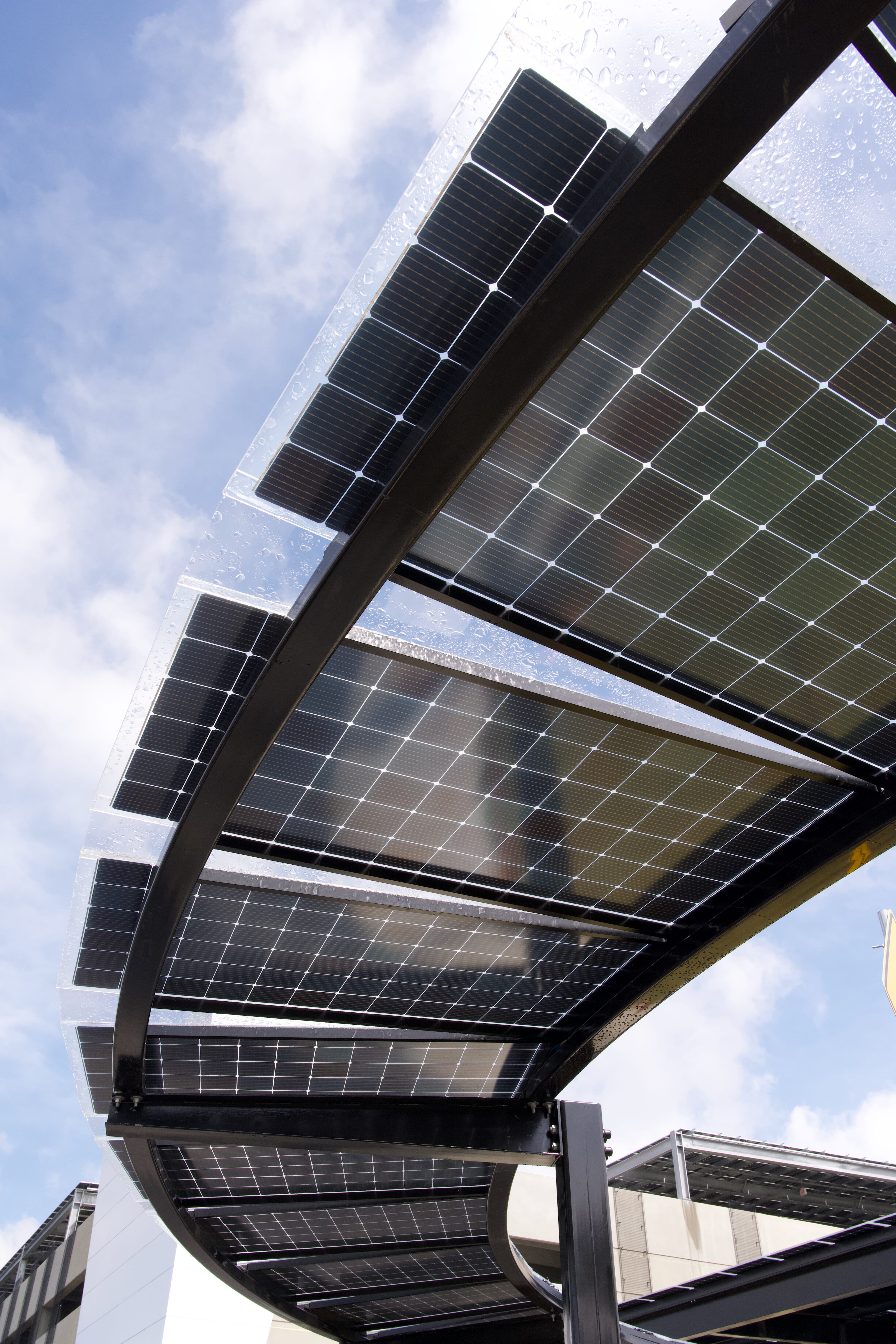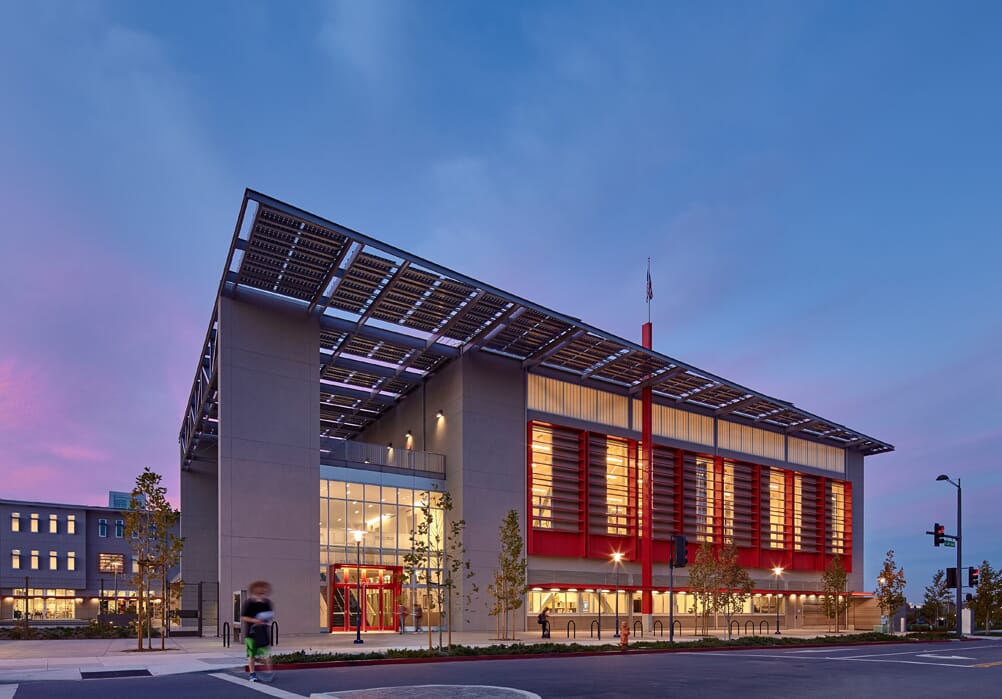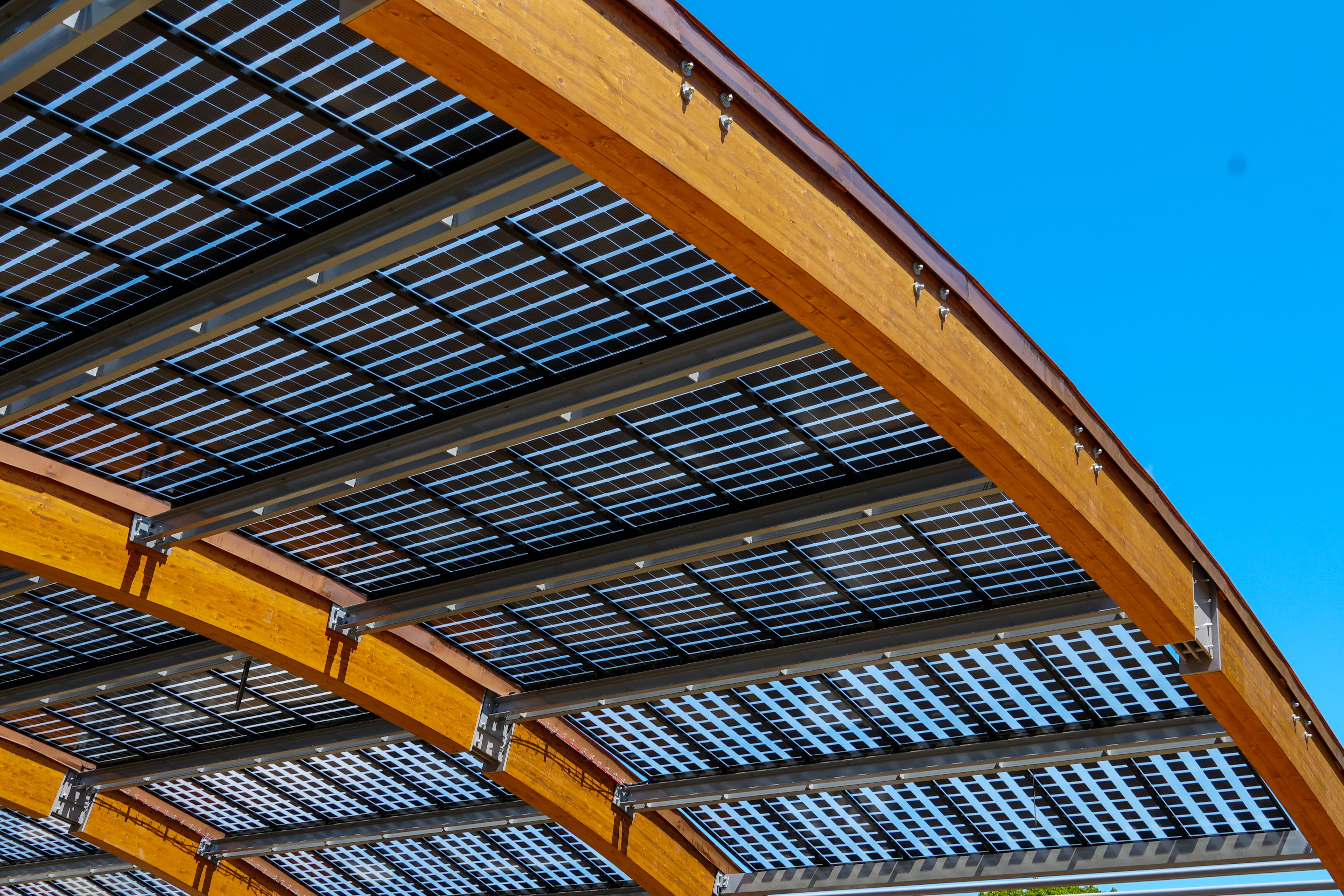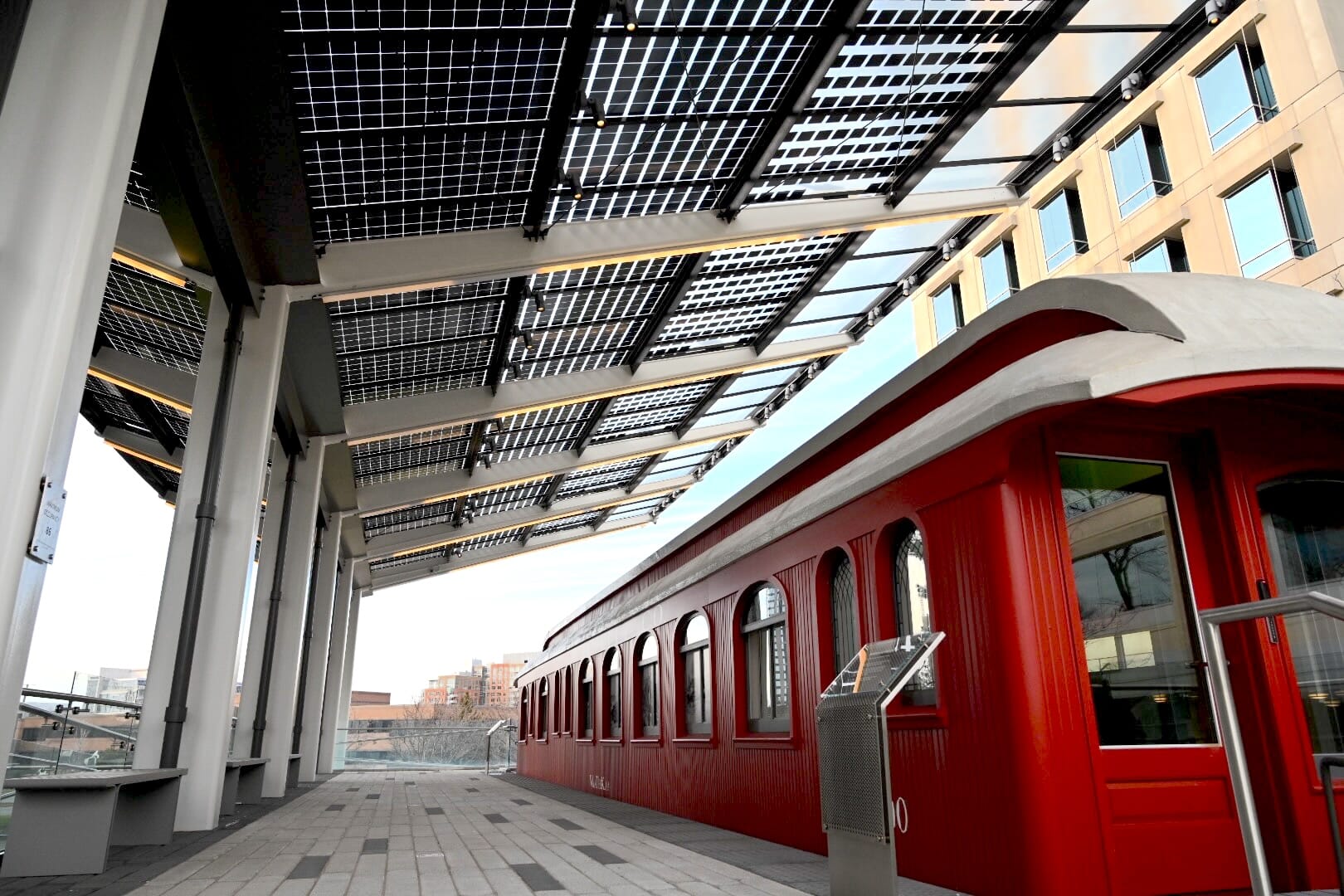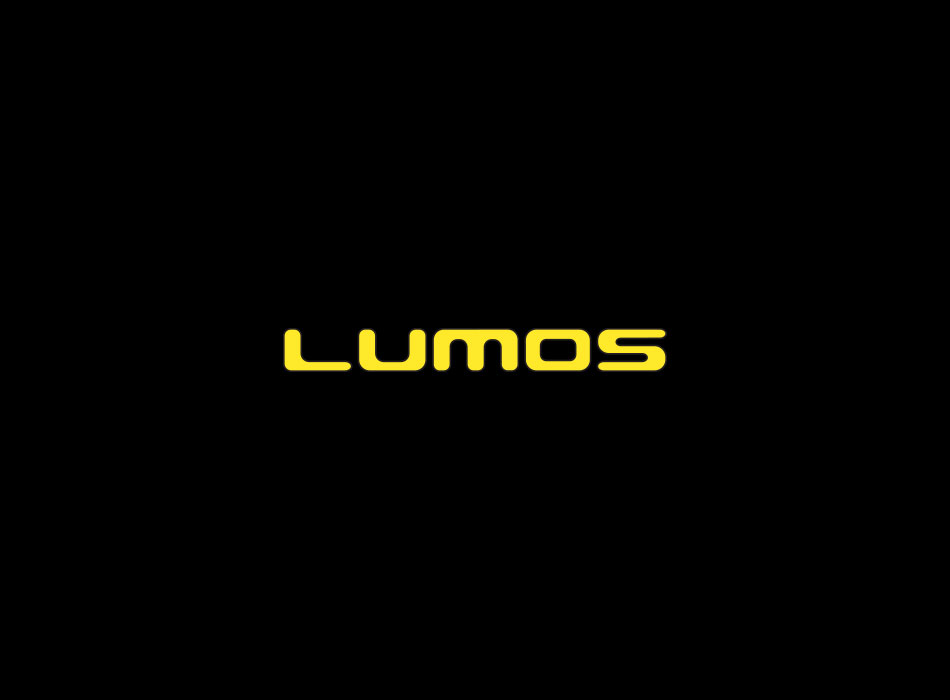The cornerstone of Lumos Solar is our uniquely beautiful solar panels.
Traditional solar systems often involve mounting panels on rooftops or installing large-scale ground-mounted arrays. However, as the demand for renewable energy has grown—and the need to optimize limited urban space has increased—Lumos pioneered a new approach. As a result, our patented architectural solar products have redefined the boundaries of the solar industry by turning everyday structures into sources of both shade and power.
To achieve this, Lumos architectural solar solutions use frameless photovoltaic (PV) modules that are built directly into buildings, structures, and architectural plans. This approach delivers top-tier energy performance with a clean, modern look. Some of our most innovative and effective solutions include our solar carports, canopies, awnings, walkways, pergolas, and building-integrated photovoltaics (BIPV)—even on curved and vertical facades.
Our Vision Module System and ClearVision Module System – offer flexible design options, making it easy to combine solar power and shade in unique, customizable ways. These systems withstand harsh weather, last for years, and feature dual-sided glass panels that collect sunlight from both sides.
Today, solar technology has moved beyond conventional rooftop panels, and iconic brands and companies have embraced Lumos’ architectural solar solutions. Discover how Lumos architectural solar designs can add cutting-edge technology and aesthetic elements to your projects.
